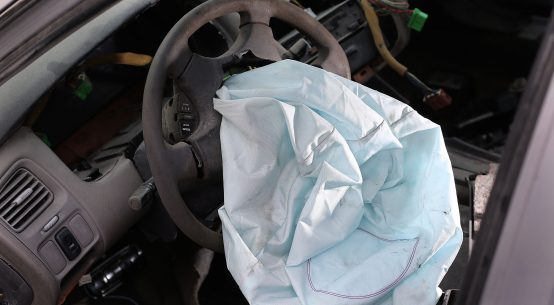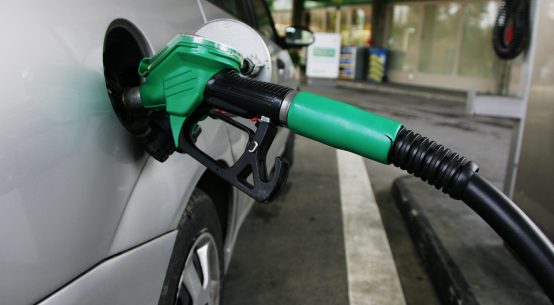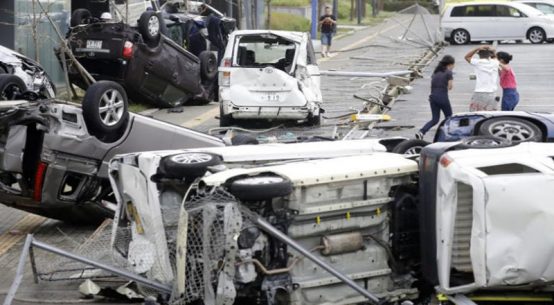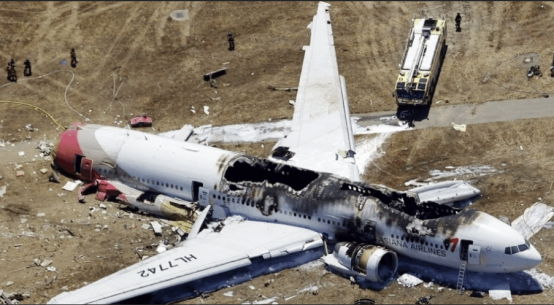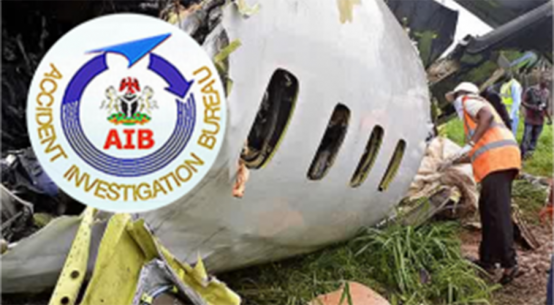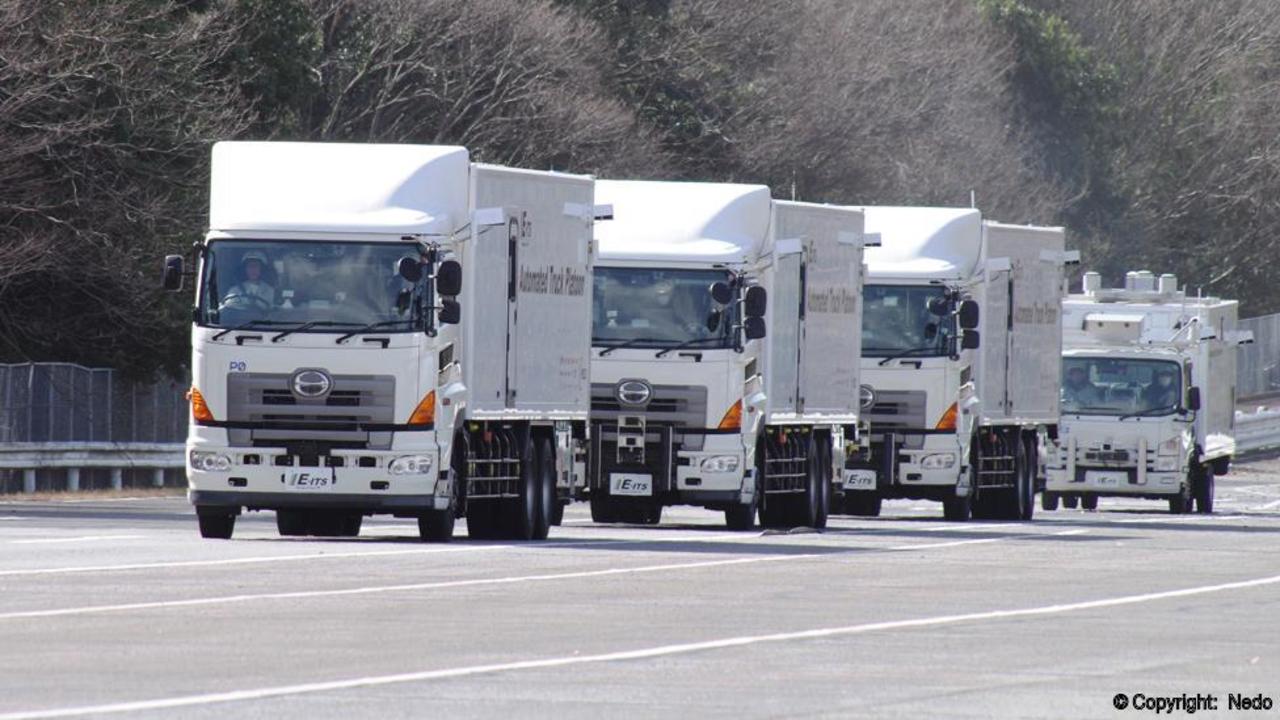
Truck “platooning”
… soon it may be perfectly normal — and safe
Washington Post – If you look to the next lane and see two 18-wheelers roar past at 70 mph with just 10 yards between them, you’ll probably think they are dangerously close.
In this high-tech age, that may no longer be true. In fact, it might be just the opposite, and it might even end up saving you money.
A wave of new technology intended to make trucks safer — using radar, cameras and reflective light scanning — is sweeping the industry. By next year, much of it may be combined to put pairs of trucks on the road at a distance that before would not have been possible or safe.
One reason this matters to people who don’t drive tractor-trailers is found in the annual crash-death numbers from the National Highway Traffic Safety Administration: Of the 4,317 people who died in crashes involving large trucks last year, 72 percent of them weren’t in trucks, but rather passenger cars. An additional 11 percent were pedestrians, bicyclists, roadway workers or police officers standing beside the highway, according to statistics released this month.
Trucks are involved in 11 percent of fatal crashes, although they make up just 4 percent of vehicles on the road, according to the Federal Motor Carrier Safety Administration. Ten percent of truck fatalities are rear-ended crashes — three times as many as rear-end collisions between two cars.
The pairing of tractor-trailers at a distance of 30 to 50 feet is called platooning. Here’s why it’s significant — and how it might save you money.
Fans of bike racing and NASCAR are acquainted with what it means to get into someone else’s slipstream. Whether in spandex or NASCAR fire-retardant suits, racers know they can save energy or fuel by tucking close behind another rider or race car.
Truckers know that, too.
Trucking companies spent about $90 billion on diesel fuel last year. Firms spend the most paying drivers, but buying diesel often is the second-biggest expense, sometimes amounting to 20 percent of operating costs.
A truck tucked in the slipstream of another tractor-trailer can save 10 percent on fuel. But the truck in front also will burn about 5 percent less fuel. Why? Part of the drag on a truck plowing into the wind is caused by turbulent air that tumbles off the top and sides of the trailer. When two trucks pair up closely, the air flows more smoothly from the first to the second, reducing that turbulence.
It’s fuel savings for both drivers. Yes, drivers; self-driving trucks are said to be coming, but for now the prospect of 80,000-pound vehicles hurtling down the highway on their own is somewhere over the horizon. (Uber last year invested $680 million in the autonomous truck company Otto, which delivered 2,000 cases of Budweiser from Fort Collins, Colo., to Colorado Springs in a carefully monitored 130-mile test drive without anyone touching a steering wheel on the highway.)

“The world of automated vehicles still will have a key role for the drivers,” Chris Spear, president of the American Trucking Associations, said at a recent Senate hearing. “We think drivers are still going to be in the seat.”
But the role of the driver will evolve.
“I believe drivers will become more like airline pilots,” said Troy Clarke, chief executive of the truck manufacturer Navistar, “even more trained and skilled than they are today.”
Safety advocates, however, have several concerns about platooning trucks, said Jonathan Adkins, executive director of the Governors Highway Safety Association.
“The chief safety concern for passenger vehicles is how other drivers will react to platoons,” Adkins said. “How fast should platoons be permitted to travel? Will long platoons block exit lanes that were not designed for such circumstances? Can we limit platoons to only the right lane, rather than blocking multiple lanes of traffic? How can we prevent cars from trying to dangerously ‘cut in’ between platooning trucks?”
Adkins adds, “The good news is that the necessary research is being conducted.”
Two big truck manufacturing companies, Navistar and Daimler, are preparing to put platooning trucks on the road, but an upstart California firm called Peloton (named after the bike-racing practice of utilizing the slipstream) says it may leapfrog the big boys to have paired trucks on the road next year.
Peloton partnered this year with Omnitracs, a trucking fleet management company. Although trucks from the same trucking company could pair up on the highway on their own, Omnitracs can help match any two trucks heading in the same direction.
Peloton says that nine states allow platooning and that 29 others have laws that generally require vehicles to keep a “reasonable and prudent” distance between them without specifying an exact distance.
Here’s how platooning works:
Peloton plans to operate a central clearinghouse that communicates through a cellular connection with trucks whose companies have subscribed to their service. Once two trucks are paired, the interaction between the trucks is coordinated over the 5.9 GHz dedicated short-range communications spectrum.
“We’re sending information directly from the front truck to the rear truck, information like engine torque, vehicle speed, brake application,” said Josh Switkes, one of Peloton’s founders. “Whatever the front truck is doing, the rear truck is doing it instantly, automatically, very reliably.”
Platooning relies on a system of technologies already being installed in trucks and many cars that includes GPS, cameras, advanced cruise control and radar-based collision avoidance. A camera from the front truck displays the road ahead to the driver of the second truck. The information flow is coordinated onboard by a computer Switkes describes as “about the size of a laptop.”
The concept of data flying between trucks, from truck to base station and within each truck — all to make instantaneous decisions with life-or-death implications — is daunting.
“The amount of data being moved about the truck is a lot higher,” said Alan Amici, chief technical officer at the global connectivity corporation TE. “For platooning, you need real-time control.”
Amici said trucks might be operating on data loads of 125 to 500 kilobits per second, but “With high-speed data moving around in the truck, you can get that up 10 megabits per second, to 100 megabits per second, and when you get into autonomous vehicles, you could be approaching 1 gigabit or 10 gigabits per second. So, it’s really high-speed data that allows much more control.”
The Peloton system links acceleration and braking directly to the engine controls, bypassing the driver when two trucks are paired, although both drivers continue to steer and can take full control if a situation warrants it.
“We can send data very rapidly between the two trucks,” Switkes said. “It’s all electronically integrated. The reaction is about 30 milliseconds, compared to a human taking 1 to 1.5 seconds to react, at a minimum.”
Follow us on Facebook for more Logistics News
The Peloton control center will determine when conditions are suited to pairing two trucks.
“In severe weather conditions, we can restrict platooning,” Switkes said. “In severe traffic conditions, we can restrict platooning and we can adjust the following distance and other parameters remotely. If we lose the connection, we know we’ve lost it and immediately take action to slow down that rear truck.”
Although Switkes likes to emphasize the safety aspects of platooning — and trucking companies see that, too — firms will be lured to Peloton and competitors by fuel savings.
“Most of the fleets we talk to say they can platoon most of the time because they drive almost entirely on the highway,” Switkes said. “If you have a fleet of 20,000 or 30,000 trucks, you’re talking millions of dollars from the fuel savings, not even taking into account the safety benefits, and that’s why we have some big fleets excited about platooning.”



